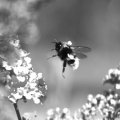More Queensland students this year chose the University of Queensland above any other State tertiary institution as their first preference for tertiary study, according to Queensland Tertiary Admissions Centre data.
'These figures show that the University appears to be performing strongly judging by student demand both in the state and national context,' Secretary and Registrar Douglas Porter said.
Preliminary figures from QTAC showed that first preference applications for entry to the University totalled 12,081 - up from last year's final figure of 11,484.
Queensland University of Technology recorded the next highest number of first preference applications - 11,900.
Applications through QTAC for admission to higher education in Queensland in 1997 were almost unchanged from last year.
At the time of publication, QTAC had recorded 56,290 applications, compared with the final March 31 figure last year of 57,108.
Mr Porter said the opportunity to admit students in the mid-year intake would be greater than last year, based on current projections.
Queensland defied the national trend this year of lower numbers of tertiary admissions centres enrolment applications, experiencing a five percent increase in applications.
'These data provide the first true test of the impact of the Federal Government's announcement of increased HECS charges including the introduction of differential HECS charges for particular fields of study,' he said.
'The figures show that, at least in Queensland, the concern expressed in the media of a drop in demand for entry to higher education, and in applications for entry to science and engineering in particular, was not well founded.
'While no formal data are available at present, press reports on the position in other states suggest a decline in total applications and in the popularity of science and engineering, but not uniformly among institutions.'
Although the OP cut-offs for these disciplines increased, OP cut-off scores for entry to most courses at the University remained unchanged from last year.
The cut-off scores for science rose from 11 to 10 and engineering rose from 11 to 8, reflecting increased demand.
Mr Porter said most applicants to these courses were admitted on scores substantially above the cut-offs.
At the time of publication, QTAC figures showed that the number of acceptances stood at 1250 for science, and 506 for engineering.
Demand for most other fields of study was very similar to last year's levels, with most OP1 students choosing science, engineering and physiotherapy as their first preference. Out of 335 first-year students with OP1 scores last year, 112 enrolled in Science, 61 in Law (including combined degrees), 58 in Engineering and 51 in Physiotherapy.
For 1997, the largest number of places accepted for any course was in arts (2109).
The hardest courses for school leavers to enter were physiotherapy and veterinary science with cut off scores of OP2, and with many OP2 students failing to gain entry. However, each of these courses admits comparatively small numbers.
Business, commerce and economics experienced a small decline in demand, against the trend of recent years, when both demand and number of places offered had risen substantially.
Within the business field the number of places offered in the business management program - in its second year of offering - increased substantially, with 343 acceptances currently recorded.
'Of greater concern, given its economic importance for Queensland, is the continuing low level of demand for places in the agriculture and natural resources field, with the number of acceptances for degree programs again failing to reach the number of quota places offered,' Mr Porter said.
For more information, contact Mr Porter (telephone 3365 1310).



